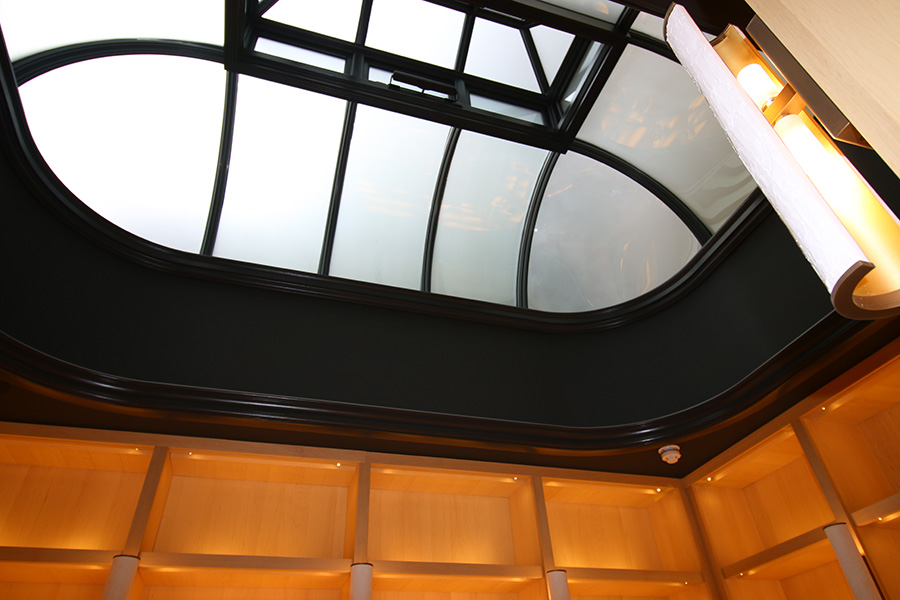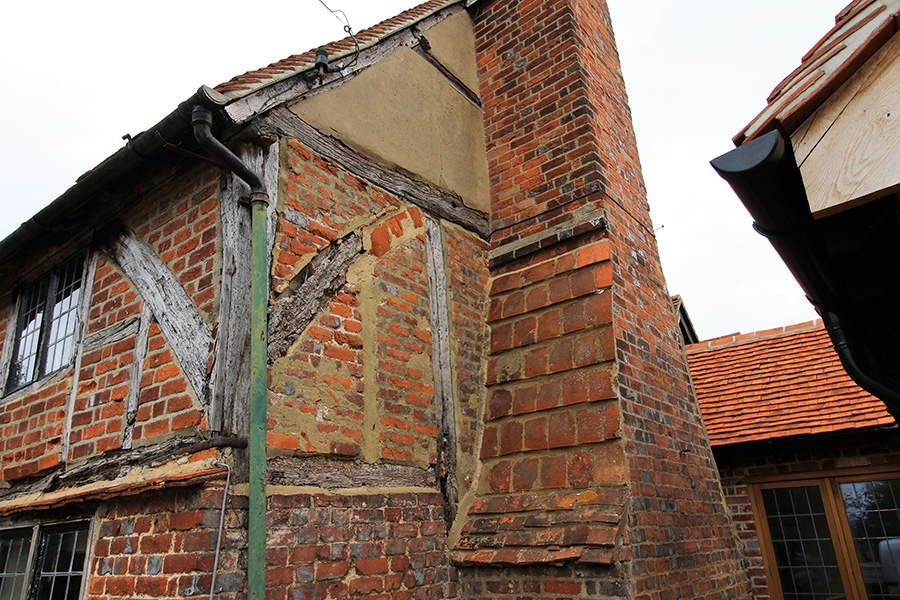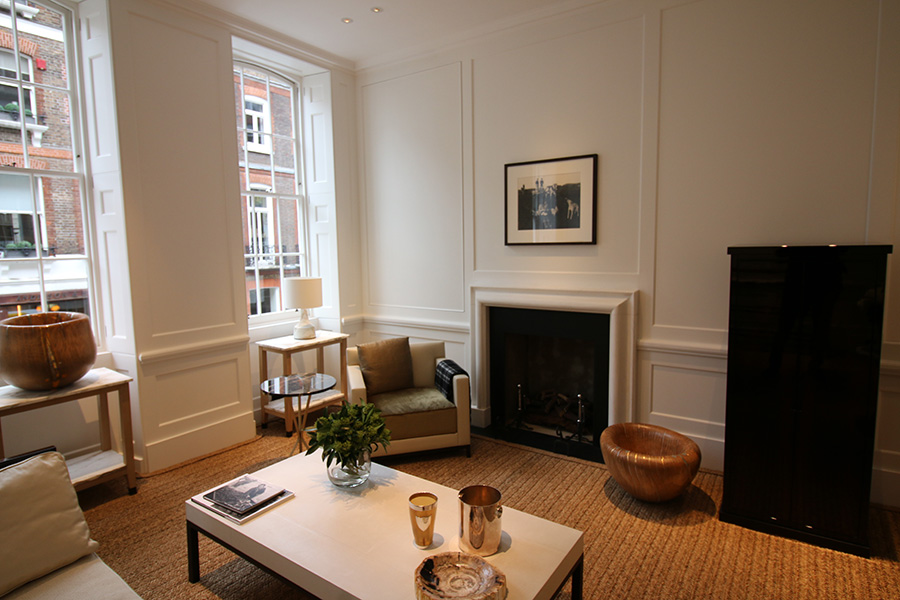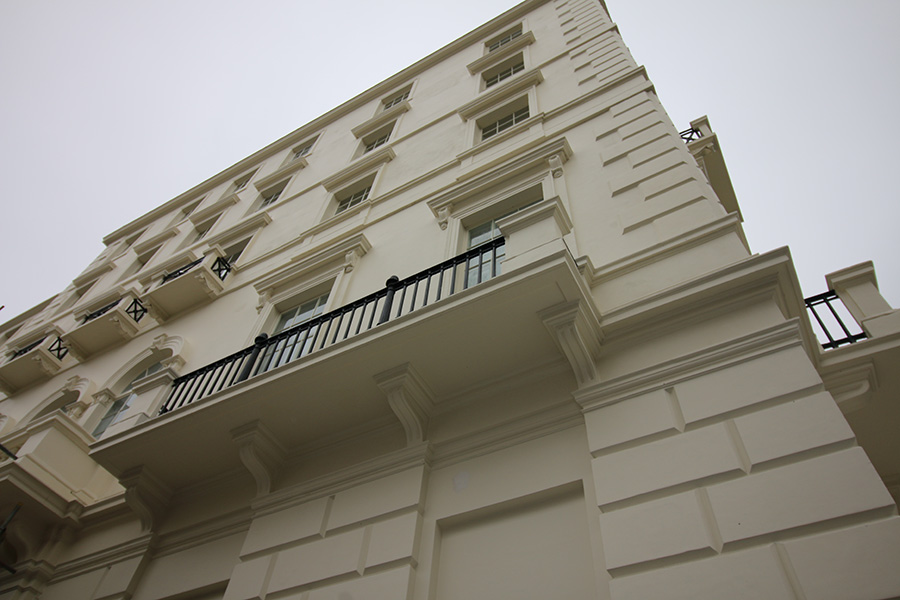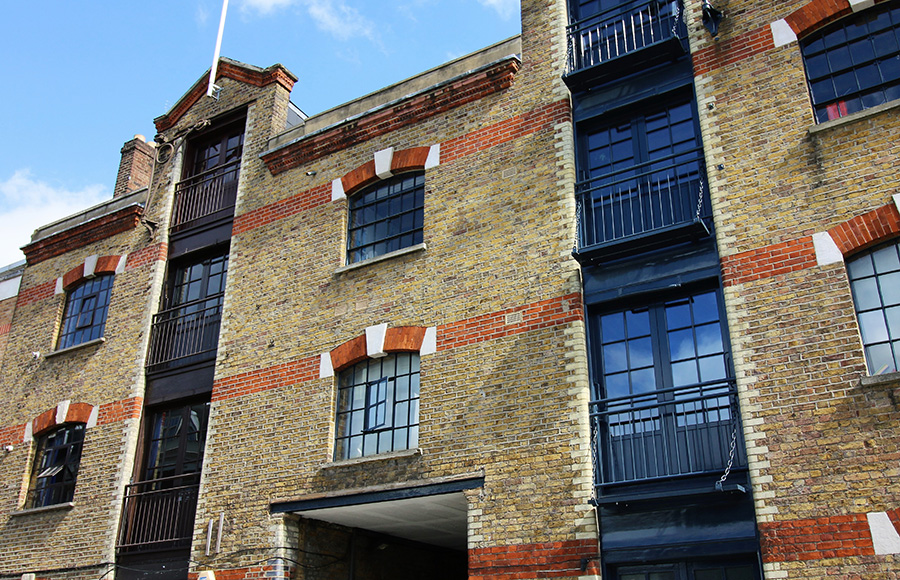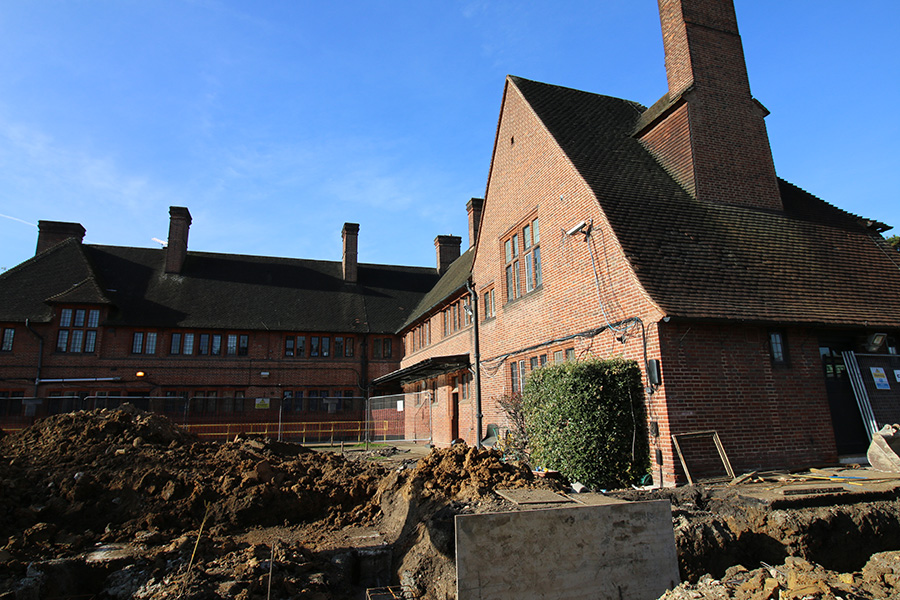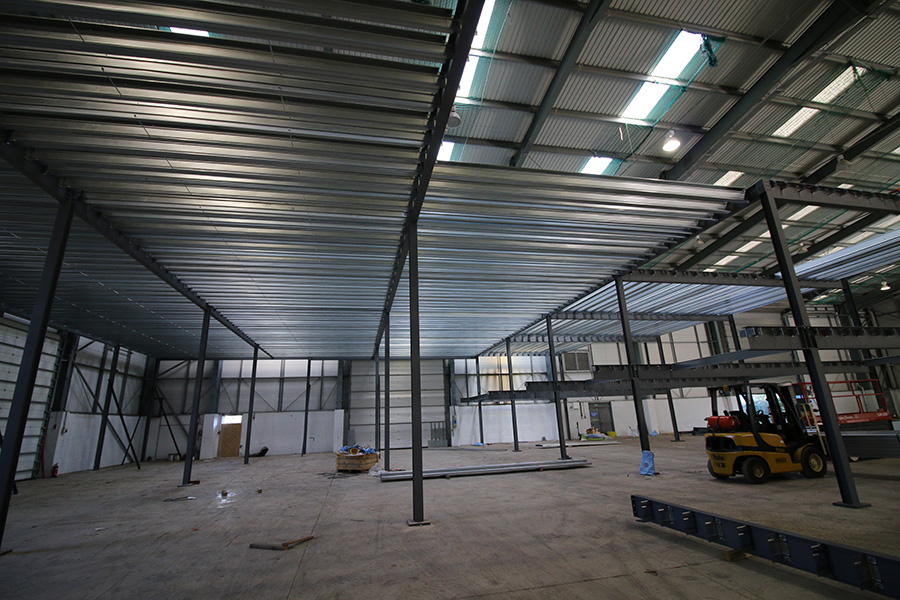
Frequently Asked Questions
General
Part E sets standards for the sound insulation between dwellings.
In the 2003 revision, the regulation was extended to cover hostel types of accommodation such as student halls of residence. We called these types of accommodation Rooms for Residential Purposes, and the definition could be taken to include hospital wards where a high standard of sound insulation could conflict with operational requirements. For this reason, we made a specific exclusion for “…a room in a hospital, or other similar establishment, used for patient accommodation…”.
The question is whether a Care Home can be considered as an “other similar establishment” “used for patient accommodation” for the purposes of this exclusion.
This is a matter for the building control body to decide, but they should take account of the following:
One of the aims of the 2003 revision of Part E was to ensure that people have a reasonable degree of acoustic privacy in their homes, including rooms for residential purposes. Patients in hospital can be considered as a special case, because the need for the medical staff to hear sounds of distress and to have rapid access to the patients, is likely to be more important than the patient’s need for privacy.
Residents in Care Homes may be considered to be in the same category as hospital patients if they are patients receiving a high level of care and are unable to live independent lives.
The guidance in Approved Document E (2003) is that organisations carrying out pre-completion testing should “preferably have UKAS accreditation (or a European equivalent) for field measurements”. The 2004 amendment adds that “The ODPM also regards members of the ANC Registration Scheme as suitably qualified to carry out pre-completion testing”.
When pre-completion testing was introduced in 2003 there were not enough UKAS/ANC test organisations to undertake the work. There are now over 50 UKAS/ANC organisations, and CLG (previously ODPM) recommend that UKAS/ANC organisations should be used unless no such organisation is available when required. Builders who employ test organisations should be made aware of this at an early stage.
Although organisations that are not UKAS accredited or ANC registered may work to the same standards as the other organisations, their operation has not been subjected to a check by a third party.
There is no single answer to this question. The term “House in Multiple Occupation” (HMO) is defined in the Housing Act 2004, and a wide range of premises will fall within the definition. Many of these premises will contain rooms that would also meet the definition of a room for residential purposes given in regulation 2 of the Building Regulations; however, there are others that will not. Each case should, therefore, be considered on its own merits.
When deciding whether a room or a suite or rooms is a room for residential purposes, the list of establishments in which rooms for residential purposes may be found, which is given in the definition in regulation 2, provides useful guidance. It states that a room or suite of rooms, used by one or more persons to live and sleep, in a hostel, hotel, boarding house, hall of residence or residential home is included in the definition of room for residential purposes. Consequently, rooms or suites of rooms used by one or more persons to live and sleep in HMOs used for those purposes, or in HMOs which have a substantially similar use, are likely to be rooms for residential purposes, although it is necessary to carefully consider each case individually.
Rooms or suites of rooms in HMOs which are not hotels, hostels, boarding houses, halls of residence, residential homes or similar are therefore unlikely to be rooms for residential purposes as defined in the Building Regulations. It is not possible to give definitive guidance, but it is unlikely for example that bedrooms in an HMO which consists of a single-family dwelling-house which is shared by a small group of students could be regarded as rooms for residential purposes.
Paragraph 1.8 of Approved Document E specifies that sound insulation testing should not be carried out between living spaces and: corridors, stairwells or hallways. This is because sound insulation testing between such spaces may give unreliable results due to the possible complex shape of circulation spaces, and the possible difficulty of establishing the volume of a circulation space.
There can also be reduced accuracy when sound test measurements are made in small rooms, and guidance on this is given in paragraph B2.11 in Annex B.
Where separating walls or floors are subject to requirement E1 they should always be designed and constructed to provide reasonable resistance to sound even if they are not going to be subjected to testing.
The purpose of this Requirement is to protect residents from noise produced in reverberant common areas. The Requirement only applies to “corridors, stairwells, hallways, and entrance halls which give access to the flat or room for residential purposes”. To comply with this, it is recommended that absorbent treatment should normally be applied only to common areas onto which dwellings open directly.
Where separating walls, without doors or windows, are adjacent to common areas it would not normally be necessary to treat the common areas, assuming normal usage. Other situations are dealt with in paragraph 0.8 of Approved Document E (2003).
Technical
Part A - Structure
Part E sets standards for the sound insulation between dwellings.
In the 2003 revision, the regulation was extended to cover hostel types of accommodation such as student halls of residence. We called these types of accommodation Rooms for Residential Purposes, and the definition could be taken to include hospital wards where a high standard of sound insulation could conflict with operational requirements. For this reason, we made a specific exclusion for “…a room in a hospital, or other similar establishment, used for patient accommodation…”.
The question is whether a Care Home can be considered as an “other similar establishment” “used for patient accommodation” for the purposes of this exclusion.
This is a matter for the building control body to decide, but they should take account of the following:
One of the aims of the 2003 revision of Part E was to ensure that people have a reasonable degree of acoustic privacy in their homes, including rooms for residential purposes. Patients in hospital can be considered as a special case, because the need for the medical staff to hear sounds of distress and to have rapid access to the patients, is likely to be more important than the patient’s need for privacy.
Residents in Care Homes may be considered to be in the same category as hospital patients if they are patients receiving a high level of care and are unable to live independent lives.
The guidance in Approved Document E (2003) is that organisations carrying out pre-completion testing should “preferably have UKAS accreditation (or a European equivalent) for field measurements”. The 2004 amendment adds that “The ODPM also regards members of the ANC Registration Scheme as suitably qualified to carry out pre-completion testing”.
When pre-completion testing was introduced in 2003 there were not enough UKAS/ANC test organisations to undertake the work. There are now over 50 UKAS/ANC organisations, and CLG (previously ODPM) recommend that UKAS/ANC organisations should be used unless no such organisation is available when required. Builders who employ test organisations should be made aware of this at an early stage.
Although organisations that are not UKAS accredited or ANC registered may work to the same standards as the other organisations, their operation has not been subjected to a check by a third party.
There is no single answer to this question. The term “House in Multiple Occupation” (HMO) is defined in the Housing Act 2004, and a wide range of premises will fall within the definition. Many of these premises will contain rooms that would also meet the definition of a room for residential purposes given in regulation 2 of the Building Regulations; however, there are others that will not. Each case should, therefore, be considered on its own merits.
When deciding whether a room or a suite or rooms is a room for residential purposes, the list of establishments in which rooms for residential purposes may be found, which is given in the definition in regulation 2, provides useful guidance. It states that a room or suite of rooms, used by one or more persons to live and sleep, in a hostel, hotel, boarding house, hall of residence or residential home is included in the definition of room for residential purposes. Consequently, rooms or suites of rooms used by one or more persons to live and sleep in HMOs used for those purposes, or in HMOs which have a substantially similar use, are likely to be rooms for residential purposes, although it is necessary to carefully consider each case individually.
Rooms or suites of rooms in HMOs which are not hotels, hostels, boarding houses, halls of residence, residential homes or similar are therefore unlikely to be rooms for residential purposes as defined in the Building Regulations. It is not possible to give definitive guidance, but it is unlikely for example that bedrooms in an HMO which consists of a single-family dwelling-house which is shared by a small group of students could be regarded as rooms for residential purposes.
Paragraph 1.8 of Approved Document E specifies that sound insulation testing should not be carried out between living spaces and: corridors, stairwells or hallways. This is because sound insulation testing between such spaces may give unreliable results due to the possible complex shape of circulation spaces, and the possible difficulty of establishing the volume of a circulation space.
There can also be reduced accuracy when sound test measurements are made in small rooms, and guidance on this is given in paragraph B2.11 in Annex B.
Where separating walls or floors are subject to requirement E1 they should always be designed and constructed to provide reasonable resistance to sound even if they are not going to be subjected to testing.
The purpose of this Requirement is to protect residents from noise produced in reverberant common areas. The Requirement only applies to “corridors, stairwells, hallways, and entrance halls which give access to the flat or room for residential purposes”. To comply with this, it is recommended that absorbent treatment should normally be applied only to common areas onto which dwellings open directly.
Where separating walls, without doors or windows, are adjacent to common areas it would not normally be necessary to treat the common areas, assuming normal usage. Other situations are dealt with in paragraph 0.8 of Approved Document E (2003).
Part B - Fire Safety
Part E sets standards for the sound insulation between dwellings.
In the 2003 revision, the regulation was extended to cover hostel types of accommodation such as student halls of residence. We called these types of accommodation Rooms for Residential Purposes, and the definition could be taken to include hospital wards where a high standard of sound insulation could conflict with operational requirements. For this reason, we made a specific exclusion for “…a room in a hospital, or other similar establishment, used for patient accommodation…”.
The question is whether a Care Home can be considered as an “other similar establishment” “used for patient accommodation” for the purposes of this exclusion.
This is a matter for the building control body to decide, but they should take account of the following:
One of the aims of the 2003 revision of Part E was to ensure that people have a reasonable degree of acoustic privacy in their homes, including rooms for residential purposes. Patients in hospital can be considered as a special case, because the need for the medical staff to hear sounds of distress and to have rapid access to the patients, is likely to be more important than the patient’s need for privacy.
Residents in Care Homes may be considered to be in the same category as hospital patients if they are patients receiving a high level of care and are unable to live independent lives.
The guidance in Approved Document E (2003) is that organisations carrying out pre-completion testing should “preferably have UKAS accreditation (or a European equivalent) for field measurements”. The 2004 amendment adds that “The ODPM also regards members of the ANC Registration Scheme as suitably qualified to carry out pre-completion testing”.
When pre-completion testing was introduced in 2003 there were not enough UKAS/ANC test organisations to undertake the work. There are now over 50 UKAS/ANC organisations, and CLG (previously ODPM) recommend that UKAS/ANC organisations should be used unless no such organisation is available when required. Builders who employ test organisations should be made aware of this at an early stage.
Although organisations that are not UKAS accredited or ANC registered may work to the same standards as the other organisations, their operation has not been subjected to a check by a third party.
There is no single answer to this question. The term “House in Multiple Occupation” (HMO) is defined in the Housing Act 2004, and a wide range of premises will fall within the definition. Many of these premises will contain rooms that would also meet the definition of a room for residential purposes given in regulation 2 of the Building Regulations; however, there are others that will not. Each case should, therefore, be considered on its own merits.
When deciding whether a room or a suite or rooms is a room for residential purposes, the list of establishments in which rooms for residential purposes may be found, which is given in the definition in regulation 2, provides useful guidance. It states that a room or suite of rooms, used by one or more persons to live and sleep, in a hostel, hotel, boarding house, hall of residence or residential home is included in the definition of room for residential purposes. Consequently, rooms or suites of rooms used by one or more persons to live and sleep in HMOs used for those purposes, or in HMOs which have a substantially similar use, are likely to be rooms for residential purposes, although it is necessary to carefully consider each case individually.
Rooms or suites of rooms in HMOs which are not hotels, hostels, boarding houses, halls of residence, residential homes or similar are therefore unlikely to be rooms for residential purposes as defined in the Building Regulations. It is not possible to give definitive guidance, but it is unlikely for example that bedrooms in an HMO which consists of a single-family dwelling-house which is shared by a small group of students could be regarded as rooms for residential purposes.
Paragraph 1.8 of Approved Document E specifies that sound insulation testing should not be carried out between living spaces and: corridors, stairwells or hallways. This is because sound insulation testing between such spaces may give unreliable results due to the possible complex shape of circulation spaces, and the possible difficulty of establishing the volume of a circulation space.
There can also be reduced accuracy when sound test measurements are made in small rooms, and guidance on this is given in paragraph B2.11 in Annex B.
Where separating walls or floors are subject to requirement E1 they should always be designed and constructed to provide reasonable resistance to sound even if they are not going to be subjected to testing.
The purpose of this Requirement is to protect residents from noise produced in reverberant common areas. The Requirement only applies to “corridors, stairwells, hallways, and entrance halls which give access to the flat or room for residential purposes”. To comply with this, it is recommended that absorbent treatment should normally be applied only to common areas onto which dwellings open directly.
Where separating walls, without doors or windows, are adjacent to common areas it would not normally be necessary to treat the common areas, assuming normal usage. Other situations are dealt with in paragraph 0.8 of Approved Document E (2003).
Part C - Site preparation and resistance to contaminates and moisture
Part E sets standards for the sound insulation between dwellings.
In the 2003 revision, the regulation was extended to cover hostel types of accommodation such as student halls of residence. We called these types of accommodation Rooms for Residential Purposes, and the definition could be taken to include hospital wards where a high standard of sound insulation could conflict with operational requirements. For this reason, we made a specific exclusion for “…a room in a hospital, or other similar establishment, used for patient accommodation…”.
The question is whether a Care Home can be considered as an “other similar establishment” “used for patient accommodation” for the purposes of this exclusion.
This is a matter for the building control body to decide, but they should take account of the following:
One of the aims of the 2003 revision of Part E was to ensure that people have a reasonable degree of acoustic privacy in their homes, including rooms for residential purposes. Patients in hospital can be considered as a special case, because the need for the medical staff to hear sounds of distress and to have rapid access to the patients, is likely to be more important than the patient’s need for privacy.
Residents in Care Homes may be considered to be in the same category as hospital patients if they are patients receiving a high level of care and are unable to live independent lives.
The guidance in Approved Document E (2003) is that organisations carrying out pre-completion testing should “preferably have UKAS accreditation (or a European equivalent) for field measurements”. The 2004 amendment adds that “The ODPM also regards members of the ANC Registration Scheme as suitably qualified to carry out pre-completion testing”.
When pre-completion testing was introduced in 2003 there were not enough UKAS/ANC test organisations to undertake the work. There are now over 50 UKAS/ANC organisations, and CLG (previously ODPM) recommend that UKAS/ANC organisations should be used unless no such organisation is available when required. Builders who employ test organisations should be made aware of this at an early stage.
Although organisations that are not UKAS accredited or ANC registered may work to the same standards as the other organisations, their operation has not been subjected to a check by a third party.
There is no single answer to this question. The term “House in Multiple Occupation” (HMO) is defined in the Housing Act 2004, and a wide range of premises will fall within the definition. Many of these premises will contain rooms that would also meet the definition of a room for residential purposes given in regulation 2 of the Building Regulations; however, there are others that will not. Each case should, therefore, be considered on its own merits.
When deciding whether a room or a suite or rooms is a room for residential purposes, the list of establishments in which rooms for residential purposes may be found, which is given in the definition in regulation 2, provides useful guidance. It states that a room or suite of rooms, used by one or more persons to live and sleep, in a hostel, hotel, boarding house, hall of residence or residential home is included in the definition of room for residential purposes. Consequently, rooms or suites of rooms used by one or more persons to live and sleep in HMOs used for those purposes, or in HMOs which have a substantially similar use, are likely to be rooms for residential purposes, although it is necessary to carefully consider each case individually.
Rooms or suites of rooms in HMOs which are not hotels, hostels, boarding houses, halls of residence, residential homes or similar are therefore unlikely to be rooms for residential purposes as defined in the Building Regulations. It is not possible to give definitive guidance, but it is unlikely for example that bedrooms in an HMO which consists of a single-family dwelling-house which is shared by a small group of students could be regarded as rooms for residential purposes.
Paragraph 1.8 of Approved Document E specifies that sound insulation testing should not be carried out between living spaces and: corridors, stairwells or hallways. This is because sound insulation testing between such spaces may give unreliable results due to the possible complex shape of circulation spaces, and the possible difficulty of establishing the volume of a circulation space.
There can also be reduced accuracy when sound test measurements are made in small rooms, and guidance on this is given in paragraph B2.11 in Annex B.
Where separating walls or floors are subject to requirement E1 they should always be designed and constructed to provide reasonable resistance to sound even if they are not going to be subjected to testing.
The purpose of this Requirement is to protect residents from noise produced in reverberant common areas. The Requirement only applies to “corridors, stairwells, hallways, and entrance halls which give access to the flat or room for residential purposes”. To comply with this, it is recommended that absorbent treatment should normally be applied only to common areas onto which dwellings open directly.
Where separating walls, without doors or windows, are adjacent to common areas it would not normally be necessary to treat the common areas, assuming normal usage. Other situations are dealt with in paragraph 0.8 of Approved Document E (2003).
Part E - Resistance to the passage of sound
Part E sets standards for the sound insulation between dwellings.
In the 2003 revision, the regulation was extended to cover hostel types of accommodation such as student halls of residence. We called these types of accommodation Rooms for Residential Purposes, and the definition could be taken to include hospital wards where a high standard of sound insulation could conflict with operational requirements. For this reason, we made a specific exclusion for “…a room in a hospital, or other similar establishment, used for patient accommodation…”.
The question is whether a Care Home can be considered as an “other similar establishment” “used for patient accommodation” for the purposes of this exclusion.
This is a matter for the building control body to decide, but they should take account of the following:
One of the aims of the 2003 revision of Part E was to ensure that people have a reasonable degree of acoustic privacy in their homes, including rooms for residential purposes. Patients in hospital can be considered as a special case, because the need for the medical staff to hear sounds of distress and to have rapid access to the patients, is likely to be more important than the patient’s need for privacy.
Residents in Care Homes may be considered to be in the same category as hospital patients if they are patients receiving a high level of care and are unable to live independent lives.
The guidance in Approved Document E (2003) is that organisations carrying out pre-completion testing should “preferably have UKAS accreditation (or a European equivalent) for field measurements”. The 2004 amendment adds that “The ODPM also regards members of the ANC Registration Scheme as suitably qualified to carry out pre-completion testing”.
When pre-completion testing was introduced in 2003 there were not enough UKAS/ANC test organisations to undertake the work. There are now over 50 UKAS/ANC organisations, and CLG (previously ODPM) recommend that UKAS/ANC organisations should be used unless no such organisation is available when required. Builders who employ test organisations should be made aware of this at an early stage.
Although organisations that are not UKAS accredited or ANC registered may work to the same standards as the other organisations, their operation has not been subjected to a check by a third party.
There is no single answer to this question. The term “House in Multiple Occupation” (HMO) is defined in the Housing Act 2004, and a wide range of premises will fall within the definition. Many of these premises will contain rooms that would also meet the definition of a room for residential purposes given in regulation 2 of the Building Regulations; however, there are others that will not. Each case should, therefore, be considered on its own merits.
When deciding whether a room or a suite or rooms is a room for residential purposes, the list of establishments in which rooms for residential purposes may be found, which is given in the definition in regulation 2, provides useful guidance. It states that a room or suite of rooms, used by one or more persons to live and sleep, in a hostel, hotel, boarding house, hall of residence or residential home is included in the definition of room for residential purposes. Consequently, rooms or suites of rooms used by one or more persons to live and sleep in HMOs used for those purposes, or in HMOs which have a substantially similar use, are likely to be rooms for residential purposes, although it is necessary to carefully consider each case individually.
Rooms or suites of rooms in HMOs which are not hotels, hostels, boarding houses, halls of residence, residential homes or similar are therefore unlikely to be rooms for residential purposes as defined in the Building Regulations. It is not possible to give definitive guidance, but it is unlikely for example that bedrooms in an HMO which consists of a single-family dwelling-house which is shared by a small group of students could be regarded as rooms for residential purposes.
Paragraph 1.8 of Approved Document E specifies that sound insulation testing should not be carried out between living spaces and: corridors, stairwells or hallways. This is because sound insulation testing between such spaces may give unreliable results due to the possible complex shape of circulation spaces, and the possible difficulty of establishing the volume of a circulation space.
There can also be reduced accuracy when sound test measurements are made in small rooms, and guidance on this is given in paragraph B2.11 in Annex B.
Where separating walls or floors are subject to requirement E1 they should always be designed and constructed to provide reasonable resistance to sound even if they are not going to be subjected to testing.
The purpose of this Requirement is to protect residents from noise produced in reverberant common areas. The Requirement only applies to “corridors, stairwells, hallways, and entrance halls which give access to the flat or room for residential purposes”. To comply with this, it is recommended that absorbent treatment should normally be applied only to common areas onto which dwellings open directly.
Where separating walls, without doors or windows, are adjacent to common areas it would not normally be necessary to treat the common areas, assuming normal usage. Other situations are dealt with in paragraph 0.8 of Approved Document E (2003).
Part G - Sanitation, hot water safety and water efficiency
Part E sets standards for the sound insulation between dwellings.
In the 2003 revision, the regulation was extended to cover hostel types of accommodation such as student halls of residence. We called these types of accommodation Rooms for Residential Purposes, and the definition could be taken to include hospital wards where a high standard of sound insulation could conflict with operational requirements. For this reason, we made a specific exclusion for “…a room in a hospital, or other similar establishment, used for patient accommodation…”.
The question is whether a Care Home can be considered as an “other similar establishment” “used for patient accommodation” for the purposes of this exclusion.
This is a matter for the building control body to decide, but they should take account of the following:
One of the aims of the 2003 revision of Part E was to ensure that people have a reasonable degree of acoustic privacy in their homes, including rooms for residential purposes. Patients in hospital can be considered as a special case, because the need for the medical staff to hear sounds of distress and to have rapid access to the patients, is likely to be more important than the patient’s need for privacy.
Residents in Care Homes may be considered to be in the same category as hospital patients if they are patients receiving a high level of care and are unable to live independent lives.
The guidance in Approved Document E (2003) is that organisations carrying out pre-completion testing should “preferably have UKAS accreditation (or a European equivalent) for field measurements”. The 2004 amendment adds that “The ODPM also regards members of the ANC Registration Scheme as suitably qualified to carry out pre-completion testing”.
When pre-completion testing was introduced in 2003 there were not enough UKAS/ANC test organisations to undertake the work. There are now over 50 UKAS/ANC organisations, and CLG (previously ODPM) recommend that UKAS/ANC organisations should be used unless no such organisation is available when required. Builders who employ test organisations should be made aware of this at an early stage.
Although organisations that are not UKAS accredited or ANC registered may work to the same standards as the other organisations, their operation has not been subjected to a check by a third party.
There is no single answer to this question. The term “House in Multiple Occupation” (HMO) is defined in the Housing Act 2004, and a wide range of premises will fall within the definition. Many of these premises will contain rooms that would also meet the definition of a room for residential purposes given in regulation 2 of the Building Regulations; however, there are others that will not. Each case should, therefore, be considered on its own merits.
When deciding whether a room or a suite or rooms is a room for residential purposes, the list of establishments in which rooms for residential purposes may be found, which is given in the definition in regulation 2, provides useful guidance. It states that a room or suite of rooms, used by one or more persons to live and sleep, in a hostel, hotel, boarding house, hall of residence or residential home is included in the definition of room for residential purposes. Consequently, rooms or suites of rooms used by one or more persons to live and sleep in HMOs used for those purposes, or in HMOs which have a substantially similar use, are likely to be rooms for residential purposes, although it is necessary to carefully consider each case individually.
Rooms or suites of rooms in HMOs which are not hotels, hostels, boarding houses, halls of residence, residential homes or similar are therefore unlikely to be rooms for residential purposes as defined in the Building Regulations. It is not possible to give definitive guidance, but it is unlikely for example that bedrooms in an HMO which consists of a single-family dwelling-house which is shared by a small group of students could be regarded as rooms for residential purposes.
Paragraph 1.8 of Approved Document E specifies that sound insulation testing should not be carried out between living spaces and: corridors, stairwells or hallways. This is because sound insulation testing between such spaces may give unreliable results due to the possible complex shape of circulation spaces, and the possible difficulty of establishing the volume of a circulation space.
There can also be reduced accuracy when sound test measurements are made in small rooms, and guidance on this is given in paragraph B2.11 in Annex B.
Where separating walls or floors are subject to requirement E1 they should always be designed and constructed to provide reasonable resistance to sound even if they are not going to be subjected to testing.
The purpose of this Requirement is to protect residents from noise produced in reverberant common areas. The Requirement only applies to “corridors, stairwells, hallways, and entrance halls which give access to the flat or room for residential purposes”. To comply with this, it is recommended that absorbent treatment should normally be applied only to common areas onto which dwellings open directly.
Where separating walls, without doors or windows, are adjacent to common areas it would not normally be necessary to treat the common areas, assuming normal usage. Other situations are dealt with in paragraph 0.8 of Approved Document E (2003).
Part M - Access to and use of buildings
Part E sets standards for the sound insulation between dwellings.
In the 2003 revision, the regulation was extended to cover hostel types of accommodation such as student halls of residence. We called these types of accommodation Rooms for Residential Purposes, and the definition could be taken to include hospital wards where a high standard of sound insulation could conflict with operational requirements. For this reason, we made a specific exclusion for “…a room in a hospital, or other similar establishment, used for patient accommodation…”.
The question is whether a Care Home can be considered as an “other similar establishment” “used for patient accommodation” for the purposes of this exclusion.
This is a matter for the building control body to decide, but they should take account of the following:
One of the aims of the 2003 revision of Part E was to ensure that people have a reasonable degree of acoustic privacy in their homes, including rooms for residential purposes. Patients in hospital can be considered as a special case, because the need for the medical staff to hear sounds of distress and to have rapid access to the patients, is likely to be more important than the patient’s need for privacy.
Residents in Care Homes may be considered to be in the same category as hospital patients if they are patients receiving a high level of care and are unable to live independent lives.
The guidance in Approved Document E (2003) is that organisations carrying out pre-completion testing should “preferably have UKAS accreditation (or a European equivalent) for field measurements”. The 2004 amendment adds that “The ODPM also regards members of the ANC Registration Scheme as suitably qualified to carry out pre-completion testing”.
When pre-completion testing was introduced in 2003 there were not enough UKAS/ANC test organisations to undertake the work. There are now over 50 UKAS/ANC organisations, and CLG (previously ODPM) recommend that UKAS/ANC organisations should be used unless no such organisation is available when required. Builders who employ test organisations should be made aware of this at an early stage.
Although organisations that are not UKAS accredited or ANC registered may work to the same standards as the other organisations, their operation has not been subjected to a check by a third party.
There is no single answer to this question. The term “House in Multiple Occupation” (HMO) is defined in the Housing Act 2004, and a wide range of premises will fall within the definition. Many of these premises will contain rooms that would also meet the definition of a room for residential purposes given in regulation 2 of the Building Regulations; however, there are others that will not. Each case should, therefore, be considered on its own merits.
When deciding whether a room or a suite or rooms is a room for residential purposes, the list of establishments in which rooms for residential purposes may be found, which is given in the definition in regulation 2, provides useful guidance. It states that a room or suite of rooms, used by one or more persons to live and sleep, in a hostel, hotel, boarding house, hall of residence or residential home is included in the definition of room for residential purposes. Consequently, rooms or suites of rooms used by one or more persons to live and sleep in HMOs used for those purposes, or in HMOs which have a substantially similar use, are likely to be rooms for residential purposes, although it is necessary to carefully consider each case individually.
Rooms or suites of rooms in HMOs which are not hotels, hostels, boarding houses, halls of residence, residential homes or similar are therefore unlikely to be rooms for residential purposes as defined in the Building Regulations. It is not possible to give definitive guidance, but it is unlikely for example that bedrooms in an HMO which consists of a single-family dwelling-house which is shared by a small group of students could be regarded as rooms for residential purposes.
Paragraph 1.8 of Approved Document E specifies that sound insulation testing should not be carried out between living spaces and: corridors, stairwells or hallways. This is because sound insulation testing between such spaces may give unreliable results due to the possible complex shape of circulation spaces, and the possible difficulty of establishing the volume of a circulation space.
There can also be reduced accuracy when sound test measurements are made in small rooms, and guidance on this is given in paragraph B2.11 in Annex B.
Where separating walls or floors are subject to requirement E1 they should always be designed and constructed to provide reasonable resistance to sound even if they are not going to be subjected to testing.
The purpose of this Requirement is to protect residents from noise produced in reverberant common areas. The Requirement only applies to “corridors, stairwells, hallways, and entrance halls which give access to the flat or room for residential purposes”. To comply with this, it is recommended that absorbent treatment should normally be applied only to common areas onto which dwellings open directly.
Where separating walls, without doors or windows, are adjacent to common areas it would not normally be necessary to treat the common areas, assuming normal usage. Other situations are dealt with in paragraph 0.8 of Approved Document E (2003).
Case Studies

All Building Control is London based and nationwide, some of our areas include...
- London
- City Of London
- Kensington
- South Kensington
- Chelsea
- Soho
- Knightsbridge
- Westminster
All Building Control is London based and nationwide, some of our areas include...
- London
- City Of London
- Kensington
- South Kensington
- Chelsea
- Soho
- Knightsbridge
- Westminster





